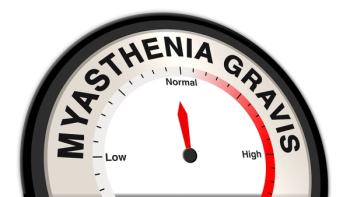
Top 5 Most-Read PAH Content of 2022
The most-read articles in pulmonary arterial hypertension (PAH) for this year ran the gamut of special-interest areas: from treatment costs to pediatric PAH to high-risk patients.
In 2022, our top 5 most-read and viewed content in
Here are the top 5 most-viewed PAH piece of 2022.
5. HFpEF-PH Improves Following Treatment With Sacubitril/Valsartan
Sacubitril/valsartan, an angiotensin receptor-neprilysin inhibitor, approved to treat patients with heart failure with preserved ejection fraction, was shown in this study to approve 4 key clinical measures among patients with HFpEF and pulmonary hypertension (HFpEF-PH): mean pulmonary arterial pressure (mPAP), functional capacity, lung congestion, and quality of life. For the primary end point of change in mPAP, patients exhibited a median (IQR) decline of –4.99 (–5.55 to –4.43) mm Hg.
4. Dr Gary Owens Addresses Managing PAH-Associated Treatment Costs
In this interview with Gary Owens, MD, president of Gary Owens Associates, addresses how to reduce care costs for patients who have PAH while optimizing their treatment outcomes. With potential costs for hospitalizations exceeding $100,000, Owens explains that although payers may want to manage pharmacy costs, doing so coupled with decreased access has potential to actually increase total medical costs.
3. Analysis Points to Potential Biomarker for Pediatric PAH
The potential for the circulating RNA hsa_circ_0003416 to act as a biomarker in pediatric patients who have PAH associated with congenital heart disease (PAH-CHD) was explored for its use as a noninvasive method of screening for PAH-CHD. Compared with both healthy controls and patients who had CHD, patients with PAH caused by CHD had lower levels of hsa_circ_0003416.
2. Cytokine Profiles May Signal High Risk of PAH in Patients With Systemic Sclerosis
Cytokine profiles were shown to be noticeably different between patients living with systemic sclerosis who were at high risk of PAH vs those at low risk and healthy controls, demonstrating the possibility of a new tool in the PAH armamentarium to identify patient risk of PAH. The study investigators emphasized the importance of evidence supporting early PAH-focused interventions and their ability to improve survival and functional status among patients.
1. Early Intervention, Combination Therapy Improve Outcomes in Pediatric PAH
Data on children living with PAH were retrospectively analyzed to decipher trends in dosing and therapy choice of parenteral prostanoid therapy delivered intravenously or subcutaneously and how they affect transplant-free survival among this patient population. Favorable long-term outcomes were shown to be more likely among patients who had a mPAP below 35 mm Hg or a pulmonary vascular resistance index below 4.4 Wood units/m2.
Newsletter
Stay ahead of policy, cost, and value—subscribe to AJMC for expert insights at the intersection of clinical care and health economics.













































